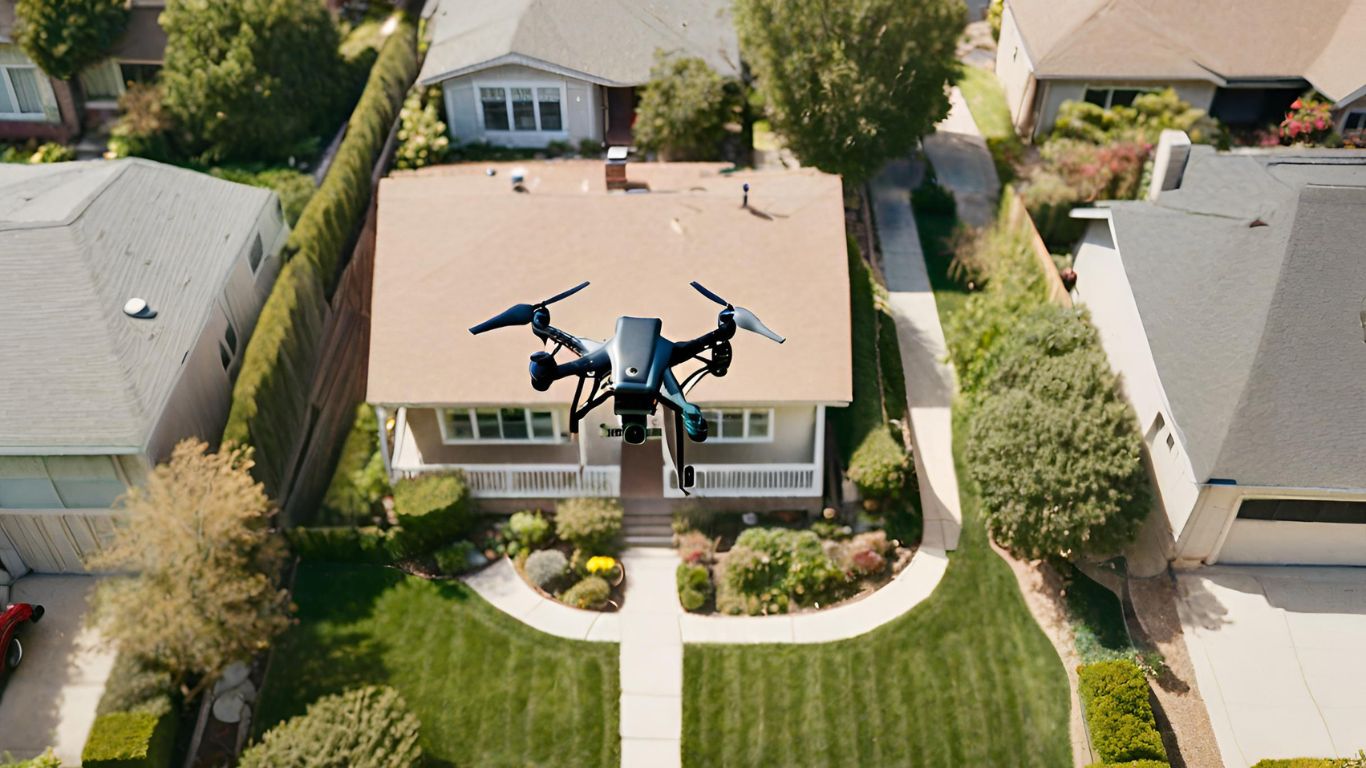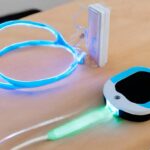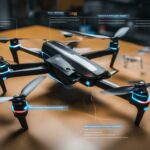Can police use drones without a warrant to conduct surveillance? The debate around law enforcement’s use of drones without a warrant is a complex issue that’s still being worked out in the legal system. The Fourth Amendment defends citizens against unreasonable searches and seizures, typically requiring law enforcement to have a warrant for such activities. But, there are exceptions for cases that need immediate action.
Yes, the police can use drones without a warrant to gather aerial surveillance footage in certain situations.
- Emergency situations: Police can use drones without a warrant in cases of emergencies, such as natural disasters, search and rescue operations, or to assess hazardous situations that pose an immediate threat to public safety.
- Exigent circumstances: If there is an immediate need to prevent imminent danger or harm, police may use drones without a warrant. This could include situations like pursuing a fleeing suspect or preventing a potential act of violence.
- Public safety and crowd monitoring: In some jurisdictions, police may use drones for monitoring large public events, protests, or gatherings to ensure public safety, manage crowds, and prevent potential threats.
- Border patrol and national security: Drones may be used by law enforcement for border surveillance, monitoring smuggling activities, or protecting national security without a warrant.
- Consent-based searches: If an individual provides consent to the police to conduct a search using a drone, a warrant may not be required. However, it is important to note that consent must be given voluntarily and without coercion.
It is essential to consult local laws and regulations to understand the specific guidelines regarding drone use by law enforcement agencies in your jurisdiction, as they can vary significantly.
Several states have already passed laws that require police to get a warrant before using drones to watch people. Also, the Federal Aviation Administration (FAA) asks law enforcement agencies to get a Certificate of Authorization (COA) before they can use drones for their operations. Legal cases and national discussions are ongoing, and they will significantly influence how police use drones in the future.
Understanding the delicate balance between effective policing and respecting privacy rights is key to navigating the new challenges posed by drone technology.
Key Takeaways: Can Police Use Drones Without a Warrant
The ongoing discussion about whether police should be permitted to use drones without a warrant is a pertinent one, given the rapid advancement of technology and its implications for both law enforcement capabilities and personal privacy.
Advocates for the use of drones by police argue that this technology could enhance their ability to maintain public safety. However, there is concern that this could lead to an overstepping of boundaries and potential violations of the Fourth Amendment, which is designed to protect individuals from unwarranted searches and seizures.
Laws regarding drone usage by law enforcement vary widely across different states, and as cases are brought to court and citizens voice their opinions, these regulations are subject to change.
Striking the right balance between ensuring safety and safeguarding privacy rights is more important than ever. As we incorporate new technologies into our society, we must also evolve our conversations and legal frameworks to protect our civil liberties.
“Finding harmony between advancing technology and protecting our privacy requires ongoing dialogue and careful consideration of our fundamental rights.”

Legal Considerations
Understanding Legal Implications of Police Drone Use
When we talk about the legal aspects of police drones, it’s essential to grasp the rules about search warrants and how they affect the privacy rights of individuals under the Fourth Amendment. This amendment shields people from unreasonable intrusions by the government, setting a clear expectation that police must have a search warrant to conduct any search, with few exceptions for urgent situations.
This rule also governs the use of drones by police forces. Several states have enacted laws that specifically require police to get a search warrant before using drones to watch over someone. The goal is to prevent any violation of personal privacy.
Police departments must also follow the rules set by the Federal Aviation Administration (FAA) when they want to use drones. The FAA asks police to get a Certificate of Authorization (COA) before deploying drones, which helps keep the skies safe and ensures drone operations don’t pose risks to people or other aircraft.
Legal disputes have come up regarding the Fourth Amendment and the drone use by police. The Supreme Court hasn’t decided yet if using drones without a warrant goes against the Fourth Amendment. Still, past decisions in cases like Kyllo and Carpenter do give us an idea of how legal standards are applied to new technology, such as thermal imaging or tracking cell phone locations. It’s likely that these standards will also influence how drone surveillance is viewed legally.
To sum up, police using drones is a complex issue with significant legal implications. Police must secure a search warrant and adhere to FAA rules to protect the Fourth Amendment rights of citizens. The ongoing discussions and legal battles will determine how police drone usage is controlled moving forward.
Custom Quote: ‘As the eyes in the sky become more common, it’s our responsibility to ensure that our right to privacy isn’t left behind on the ground.’
Privacy Concerns
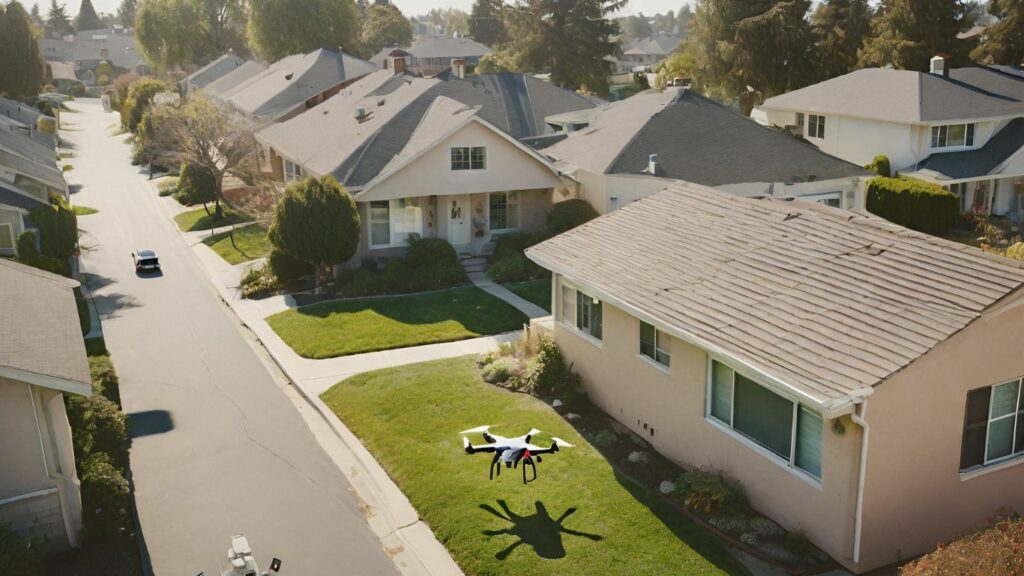
If you’re concerned about your personal space and information, it’s worth paying attention to how police might use drones. Law enforcement’s increasing use of these devices has sparked debate over privacy rights and the risk of misuse. Let’s look at four reasons why we should take these privacy issues seriously:
- A Court Case Example: The Fourth Circuit US Court of Appeals made a noteworthy decision that the Baltimore Police Department’s drone use without a warrant stepped over the line regarding the Fourth Amendment, which protects against unreasonable searches. This case underscores the need for precise rules about drone deployment by police.
- Ongoing Surveillance: Drones, with their advanced cameras and sensors, can watch over people without them knowing, creating a big privacy concern. This kind of surveillance means that police could potentially watch and follow people’s movements without any solid reason.
- Avoiding Misuse: A key opinion from the court suggested that without specific rules for drone use, police might misuse this technology. Lack of control could lead to privacy invasions and a decrease in civil freedoms.
- The Push for Regulations: Some states have moved forward with laws to manage how police use drones, seeking to find middle ground between the needs of law enforcement and the privacy rights of individuals. Proper regulations can promote responsible use and prevent drones from being used carelessly.
To wrap it up, the worries about police using drones without proper authorization are well-founded. Policymakers should create rules that defend our privacy while still permitting police to use drones when there’s a legitimate need.
‘Respecting privacy in the age of aerial surveillance means setting firm boundaries to protect people’s lives from unwarranted eyes in the sky.’
Pros of Police Drone Usage

Pros of Using Drones in Police Work
One significant advantage of employing drones in police work is the bird’s-eye view they offer, which greatly improves surveillance and awareness during operations. Drones are practical tools for police forces, enabling them to reach areas that might be too risky or inaccessible on foot, such as high rooftops, isolated terrains, or thick woodlands. These devices can stream live video, supplying officers with up-to-date information that aids in making swift and informed decisions.
Drones also play a vital role in ensuring public safety, particularly in search and rescue missions. Their capability to quickly scan broad expanses of land makes them invaluable in finding people who are lost or pinpointing potential dangers. The thermal imaging technology some drones are equipped with can be crucial in spotting individuals in need of help or in tracking down suspects.
Here’s a simple breakdown of the benefits that drones bring to police work:
| Pros of Using Drones in Police Work |
|---|
| Improved surveillance |
| Better operational awareness |
| Quick information gathering for decision-making |
| Assistance in search and rescue efforts |
It’s necessary to mention that police drone operations are regulated to safeguard people’s rights and privacy. The Fourth Amendment demands that authorities get a warrant before conducting certain types of surveillance, so while drones are extremely useful for police, it’s important to balance their use with respecting individual freedoms.
*“Technology should serve the people, and when it comes to law enforcement, drones can be like extra eyes in the sky, but we must always ensure that they’re used in ways that respect our rights.”*
Cons of Police Drone Usage
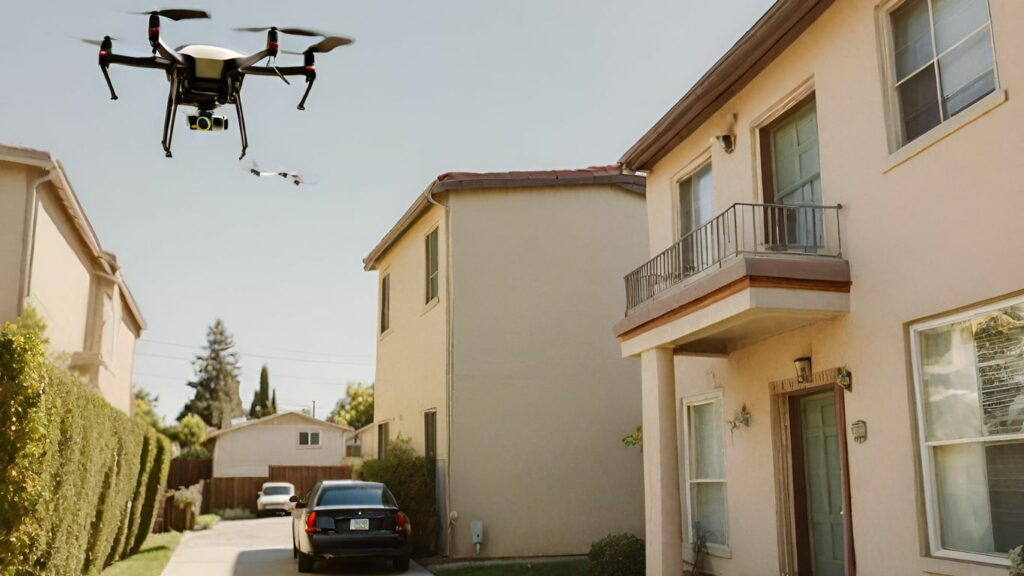
Police drone use has its drawbacks, especially concerning privacy and civil liberties. While drones can aid in law enforcement, it’s necessary to think about the potential downsides. Here are four notable concerns:
- Privacy Issues: Drones used for surveillance might violate privacy. They can record images and videos on private property without permission, which can lead to privacy breaches and potentially clash with the Fourth Amendment’s protections against unreasonable searches.
- Unclear Rules: There’s a pressing need for clear rules on police drone use. With vague guidelines, there’s a risk of drones being used without proper authorization, leading to possible overreach and privacy violations.
- Misuse Risks: Without strict regulations, there’s a chance that drones could be used for reasons unrelated to public safety, which could stifle personal freedoms and harm the relationship between the police and the community.
- Security Concerns: Drones present security issues. They can be susceptible to hacking or interference, which could expose sensitive data or disrupt police work. Adequate security measures are essential to safeguard both police operations and public safety.
Current Policies and Regulations
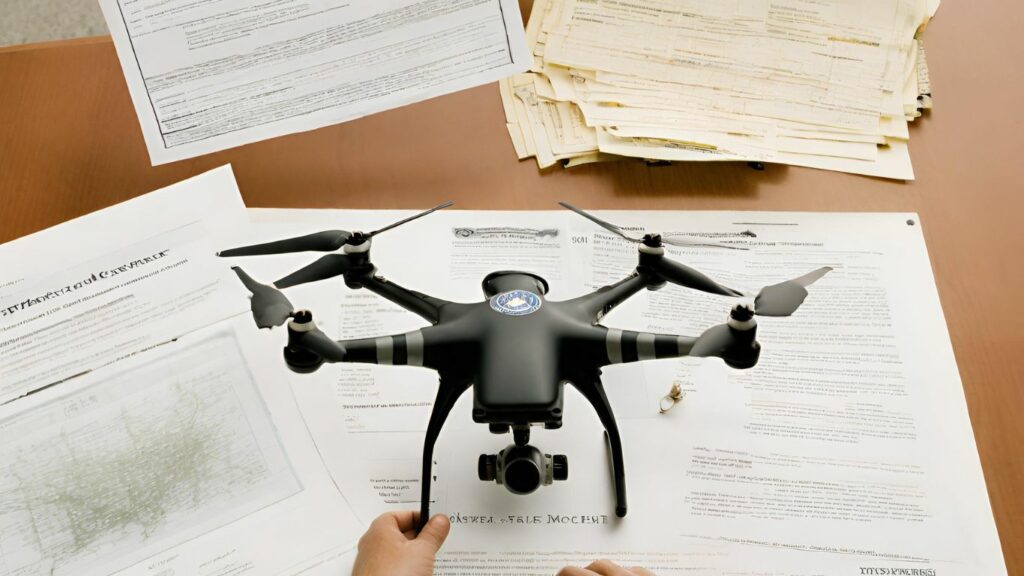
Understanding the rules that your local police follow for drone use is key to knowing how much power they have. In a lot of places, the law says police must get a search warrant before they can use a drone to watch someone. That means, usually, the police need to get a judge’s go-ahead first.
The Federal Aviation Administration (FAA) also has a say in this. They require the police to have a Certificate of Authorization for drone use. This certificate makes sure the police are using drones correctly and following the guidelines.
But there are times when the police can use drones without a warrant. If there’s an urgent threat to people’s safety or if they think evidence could get destroyed quickly, the police mightn’t need a warrant. These exceptions try to make sure public safety and personal privacy are both taken into account.
Some cities have set their own rules about how the police can use drones. These local policies can include things like needing a warrant or making sure people aren’t targeted just because of their race or ethnicity. Cities such as Seattle, Los Angeles, Minnesota, Indianapolis, and North Dakota have put rules in place to make sure police use drones in a responsible and fair way.
The rules about when police can use drones without a warrant keep changing as new discussions and legal cases come up. It’s really up to us, the citizens, to keep up with these changes. By doing so, we can make sure our privacy rights, which the Fourth Amendment protects, are respected.
Stay informed and aware of your rights. This isn’t just about drones; it’s about how technology affects our freedoms. As technology grows, so does the need for clear rules that keep our privacy safe.
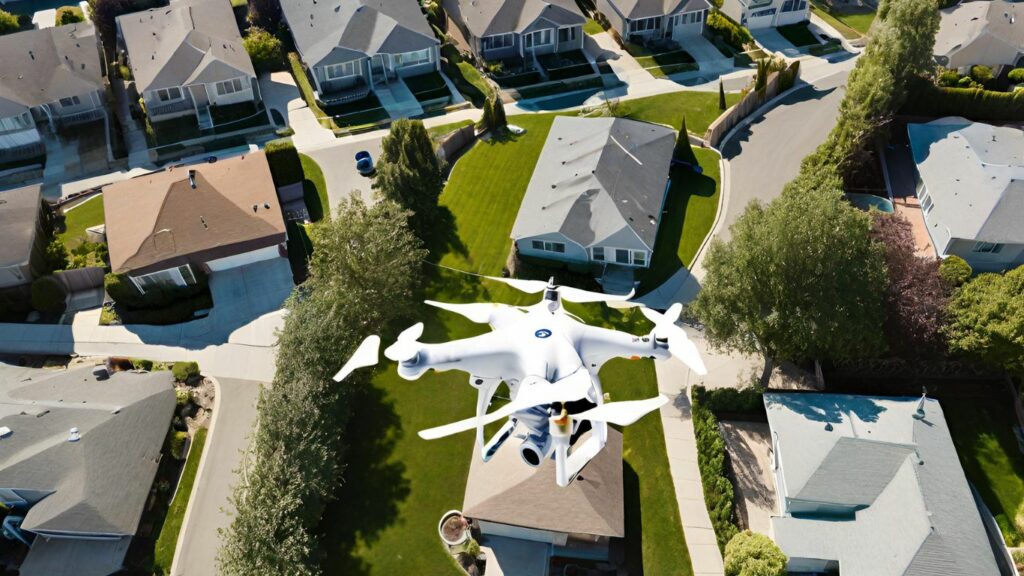
Frequently Asked Questions
Can Drones Be Used Without a Warrant?
Police departments sometimes use drones for surveillance without needing a warrant, which has sparked discussions about privacy rights. As technology advances, so does the need for clear rules to ensure that the use of drones by law enforcement strikes a fair balance between the necessity for public safety and the protection of individual privacy.
Court decisions are shaping the landscape of drone use, highlighting the significance of having guidelines that address the legal aspects of searches from the air.
Recent court decisions and regulations are defining the appropriate use of drones, making it clear that the conversation about the balance between security measures and personal freedoms is ongoing and vital. Law enforcement agencies must consider these evolving rules when deploying drone technology to avoid infringing on citizens’ rights.
Do Drones Violate the 4th Amendment?
The use of drones could potentially infringe on your rights under the Fourth Amendment, which guards against unreasonable searches and seizures. Legal cases have brought to light the complex issues surrounding drone use for surveillance, emphasizing the need for clear regulations that uphold both the security needs and the privacy rights of citizens. These guidelines are vital in preventing the misuse of drones and in maintaining public safety.
“Privacy in the age of aerial technology is a delicate balance, and understanding our rights is the foundation of protecting them,” as one might say in reflection of the situation.
Can Police Use Drones for Crime Scenes?
Police departments are increasingly turning to drones as tools to help with crime scene investigation. The use of drones provides a bird’s-eye view, which can be incredibly helpful for documenting crime scenes, coordinating search and rescue efforts, analyzing traffic collisions, overseeing large crowds, carrying out tactical operations, collecting evidence, and promoting public safety, even as debates about privacy linger.
Drones offer a quick and comprehensive way to photograph and map a crime scene from above, which can be especially useful in areas that are difficult to reach on foot. They can also be employed to monitor traffic accidents, helping to clear roads faster and more efficiently. During large events, drones can provide officers with a real-time overview to help manage crowds and prevent incidents.
In search and rescue operations, drones can cover vast areas much more quickly than human search teams. They can be equipped with thermal imaging cameras to find missing persons, even in challenging conditions. For tactical police operations, drones can give a clear view of a situation before officers approach, which can be crucial for ensuring their safety.
Using drones also helps departments to save resources and time, which is vital in emergency situations where every second counts. However, alongside the benefits, the use of drones by police forces raises questions about privacy and the need for clear regulations to protect citizens’ rights.
In any case, as technology advances, the role of drones in law enforcement is likely to grow, supporting the goal of keeping communities safe.
“Advancements in technology should always be balanced with the values of privacy and civil liberties. Drones offer a powerful tool for law enforcement, but we must be vigilant to ensure they are used responsibly.”
Can Police Drones Follow You?
Police drones have the capability to track individuals, which has sparked a debate over privacy rights. The increase in drone usage by law enforcement agencies, coupled with vague guidelines on their operation, raises questions about legality and ethics.
While some people see the value in using drones for safety and efficiency, others worry about the implications for personal freedoms. It’s important to consider both the rules governing airspace and the pace of technological progress to find a balance that maximizes benefits while protecting citizens’ rights.
Specifically, the conversation about police drones must address:
- How drones are used in law enforcement and what guidelines are in place to govern their use.
- The concerns citizens have regarding their right to privacy and how these are being addressed.
- The need for clear and fair regulations that provide guidance on the use of drones without infringing on civil liberties.
- The role of technology in enhancing law enforcement capabilities while also ensuring that these advancements do not compromise individual rights.
Finding the right balance is an ongoing challenge that requires input from technology experts, legal professionals, and the public. It’s a complex issue that demands careful consideration and ongoing dialogue to ensure that the benefits of drone technology are realized without diminishing our valued privacy.
As we continue to discuss the implications of police drones, it’s vital to stay informed and actively participate in shaping the policies that will impact our society. “The eyes in the sky must not become spies in the sky,” a consideration we must take seriously as we forge ahead into an age where technology and governance intersect.
Conclusion
The debate over whether police should be able to use drones without warrants is ongoing and reflects a larger conversation about legal rights and privacy. Proponents of drone use by law enforcement point out that drones can help police more effectively do their jobs. On the other hand, critics worry that this could lead to overreach and infringements on the Fourth Amendment, which protects citizens against unreasonable searches and seizures.
The rules governing the use of drones by the police aren’t uniform and can vary from one state to another. Legal challenges and public discussions are likely to influence how these practices are regulated in the future.
‘Balancing safety with privacy is vital, and as technology advances, so too must our discussions on rights and regulations,’ reflects a sentiment that captures the essence of this issue.


